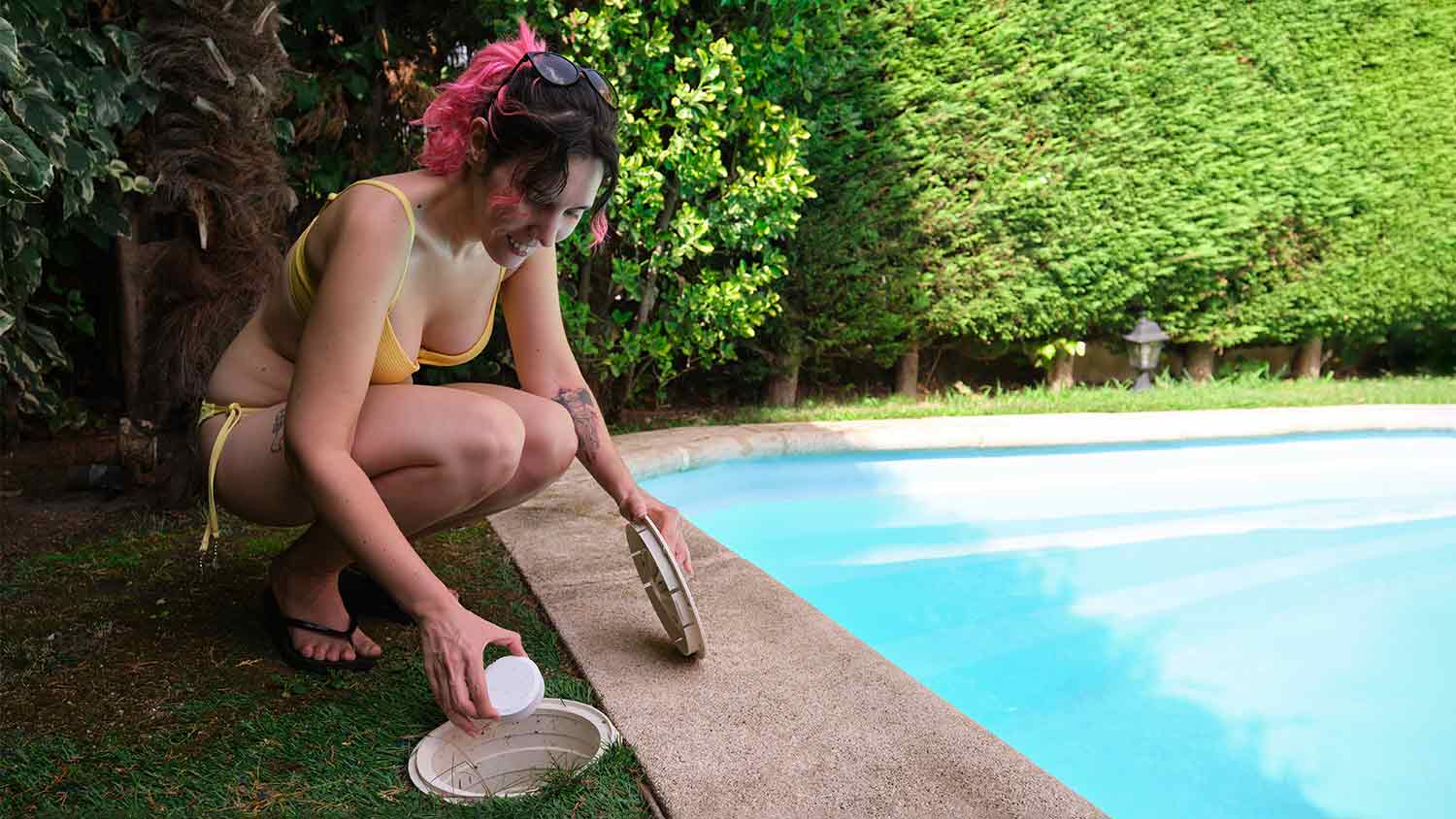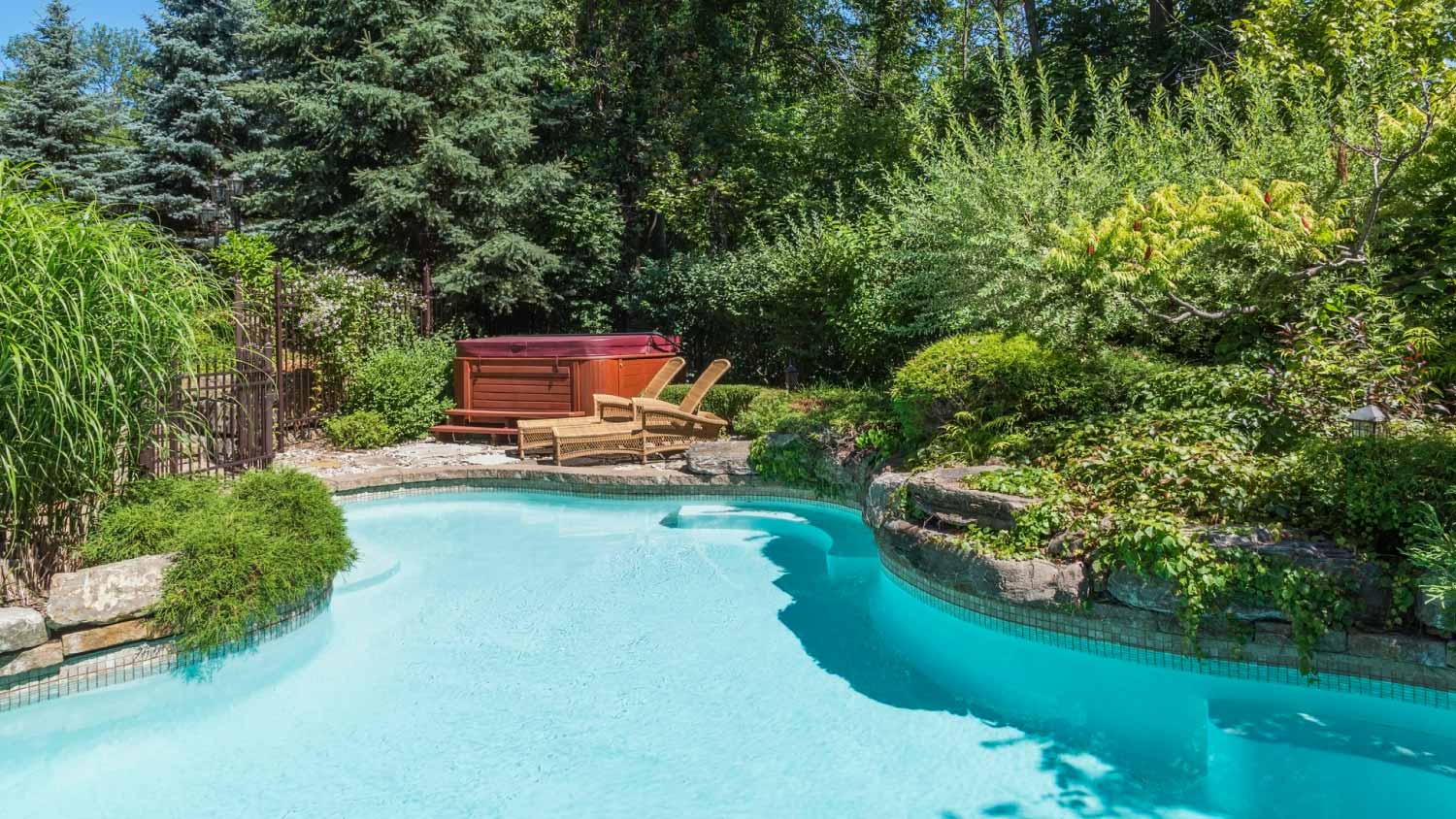
Georgia has a longer-than-average swimming season, so make sure you’re prepared. This guide runs through pool liner replacement costs in Atlanta.
No lab coat is needed for this science lesson


The ideal pH level of a pool is between 7.2 and 7.8.
Many pool products include baking soda as an active ingredient.
Baking soda is naturally alkaline, making it a good pool maintenance product.
Maintaining your pool is like a school science project. It involves a little know-how, a lot of chemistry, and a dash of consistency. While chlorine is a crucial chemical for pool maintenance, another pool hack can make your swims more enjoyable: adding baking soda to your pool.
While the benefits of baking soda have been passed down for generations for in-home uses, like unclogging a toilet and getting rid of bad smells, we’re here to tell you that this kitchen staple can also be used outside the confines of your home. So, what does baking soda do for a pool? Read on to learn what it does and how to use it.
Outside of the benefit of being an inexpensive ingredient you likely already have in your pantry, using baking soda in your pool offers a few other pool maintenance perks.
In fact, you may see the chemical name (sodium bicarbonate) in the ingredient list of pool products you already use. That’s because baking soda has a pH balance of around 8, making it a naturally alkaline compound.
An imbalanced pool can lead to a host of issues, from cloudy or hard water to dangerous algae buildup. Baking soda in a paste or poured directly into your pool is a great DIY way to keep your pool looking and feeling clean and tackle some of the most common pool concerns.

While baking soda can’t fix all issues surrounding cloudy or hard water, it may be able to help. Water that is too hard can damage your pool systems over time and is harsh on skin and hair. And too cloudy water may indicate additional concerns, like a chemical imbalance.
Baking soda can help soften your water and clear your cloudy pool by balancing your pool’s pH and returning it to safe and comfortable swimming levels.
If you notice any corrosion on your pool surfaces or features, like rusting ladders or pits in the lining of your pool, it may be a sign that your water’s alkalinity is too low. And if you procrastinate on tackling these issues, you may be left with a hefty repair bill that could have been avoided.
Maintaining a correct pH balance using baking soda can help extend the lifetime of your pool by preventing corrosion without having to purchase additional cleaning or maintenance products.
Algae buildup looks and feels, well, gross. If you notice that the lining of your pool feels slimy or that the water is beginning to look a little green, it’s time to act. Baking soda mixed into a paste with water effectively treats algae spots. To use, slather the paste on the spot and use a scrub brush to remove the algae.
If you notice algae all over the pool, use an algaecide first, letting it circulate for 24 hours. Then, come in with your baking soda paste to spot-treat any extra-tough areas.

Test before you start. Ideally, aim for a pH level between 7.2 and 7.8 and alkalinity between 110 and 150 parts per million (ppm). Higher than 8 and your pool water may cause skin rashes; lower than 7 and the water can sting swimmers’ eyes.
Calculate the right amount. This math can get tricky. The general rule of thumb is to raise alkalinity by about 10 ppm use 1.5 lbs of baking soda per 10,000 gallons of water. To get a balanced pH, figure out how much baking soda you’ll need to raise the alkalinity to at least 100 ppm. If this is your first attempt to raise your pool’s pH balance with baking soda, start small and work your way up.
Spread it evenly across your pool. When pouring the baking soda, work around the pool rather than dumping it all in one location. Try to do this on a day when there’s little to no wind.
Use the circulation system. It’ll take about six hours for the baking soda to dissolve. You can help make the process more efficient by using your pool’s jet system, although we still recommend waiting six hours just in case.
Test again. Before you consider your job complete, test the pH balance again. If it’s still below the recommended amount, repeat these steps, adding a bit of baking soda at a time.
Purchase baking soda in bulk. As you can see, you may need quite a bit of baking soda. If your pH is off quite a bit, you may need as much as 10 pounds to hit the proper balance. Look for it at bulk food stores or online to save money.
Be patient. If you do too much too fast, you can over-alkalize your pool and cause cloudy water. Then, you’ll have to figure out how to lower the pH balance of your pool instead, adding more work. Remember that you can always add more baking soda if you need to.
Get into a routine. Treat problems before they occur by adhering to a consistent pool maintenance routine. If it seems like too big of a challenge, you may want to hire a local pool maintenance service to help.
The largest risk of using baking soda in your pool is using too much, especially in hard water, as it can cause calcium buildup. Excessive calcium can cause the pipes to corrode and scale to build up on the pool walls and floor, making them rough. If this happens, you must rebalance the pH and alkalinity levels to reduce the water’s hardness.
Baking soda is a good solution when you’re in a pinch because it’s something you likely already have in your kitchen and feel comfortable using. But it’s not the only choice for pool maintenance.
Another pool water hack is to use soda ash (also known as sodium carbonate). Soda ash also raises your pool’s alkalinity and pH levels, although not at the same rate as baking soda. Baking soda impacts a pool’s alkalinity much more than soda ash. So, if your pool’s alkalinity is already at the right level (or close enough) but the pH is still off, you may consider soda ash instead.
Simply put, use baking soda if you’re worried about alkalinity and pH. If pH is your main concern, use soda ash. Your best bet is to keep both on hand to fight any concerns.
From getting an estimate to ordering flooring to installation, Randolph and Mortimer was outstanding. This was a large installation in a commercial building but they worked with us to install the flooring quickly and around our scheduled open hours. The flooring installers were efficient and...
From average costs to expert advice, get all the answers you need to get your job done.

Georgia has a longer-than-average swimming season, so make sure you’re prepared. This guide runs through pool liner replacement costs in Atlanta.

A pool remodel can transform your entire yard. Find out average pool remodel costs in Atlanta and get your project rolling.

Are you looking to install a swimming pool? This guide will help you estimate your in-ground pool costs in Atlanta so you can stay peachy and cool all summer long.

Our chlorine calculator helps you determine the exact amount of chlorine to add to your pool, based on its volume and your desired parts per million (ppm) level.

How much shock does my pool need? Here's how to calculate how much pool shock to add to your pool based on its overall water condition.

A broken pool light can be dangerous as well as inconvenient. Learn who to call to fix your pool light safely and correctly.